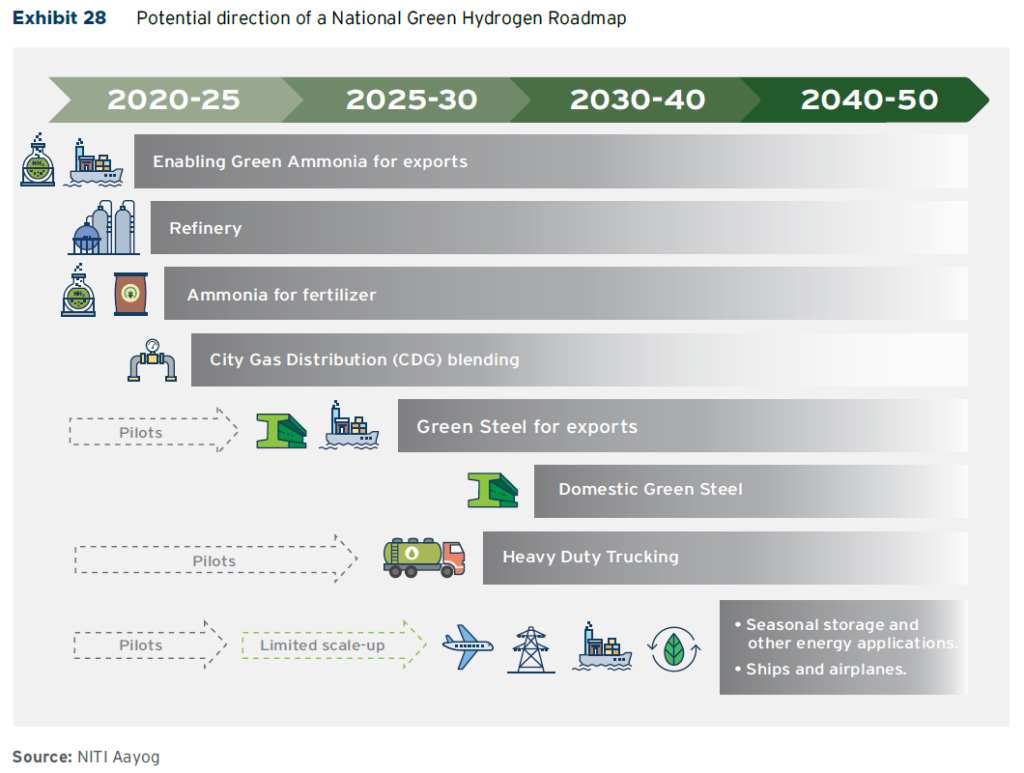Harnessing opportunities for deep decarbonisation in India: new report
By Julian Atchison on July 14, 2022

A new report from Indian government think-tank NITI Aayog and the Rocky Mountain Institute has outlined the enormous opportunity for India to produce renewable hydrogen & ammonia. The findings show cost parity with fossil-based hydrogen being achieved by 2030, with renewable hydrogen achieving a steadily increasing share of overall demand in India: from zero today to 70% in 2040. By 2050 India could represent as much as 10% of world demand for hydrogen, and possess a domestic market for renewable hydrogen worth $8 billion.
Crucially, ammonia establishes itself early as a key part of this transition: both via the use of renewable hydrogen for fertiliser production, and as a near-term export vector.
An important message of the report was that green hydrogen can potentially provide a replacement of fossil fuels in industrial processes. The next steps at the policy level could involve arriving at the correct mix between mandates/regulations and price instruments.
NITI Aayog CEO Shri Amitabh Kant in his organisation’s official press release, 29 June 2022
Electrolysis for ammonia export dominates forecasts to 2030

Of the envisioned 160 GW of installed electrolyser capacity by 2030, a full 54 GW is dedicated to the production of ammonia for hydrogen exports, with a further 15 GW for producing ammonia for domestic use. And, if alternative hydrogen carriers are not realised, another 41 GW of electrolysis could go towards ammonia production for export. According to the author’s calculations, this represents about 7 million tonnes of renewable hydrogen every year, or over 20 million tonnes of renewable ammonia, potentially making India the world’s largest producer of green ammonia for exports by 2030.
You can download a pdf of the full report here.